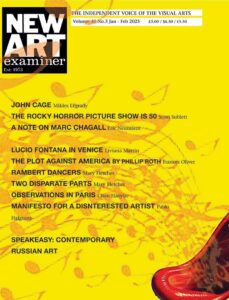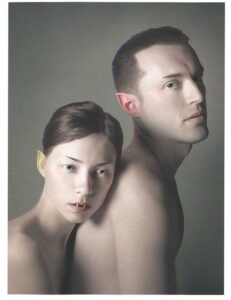By Mark Bloch
“The dragon stands as the guardian of the treasure.” (~Carl Jung, CW, The Collected Works of C. G. Jung, 9i, Para 283.)
Just as a dragon guards its treasure, our subconscious guards valuable lessons and opportunities for growth. The process of self-development is an ongoing journey to be continuously confronted and integrated with each passing moment, symbolic of an inner conflict between our conscious ego and our unconscious instincts. Life is far from perfect but we are resilient.
“The archetype as an image of instinct is a spiritual goal toward which the whole nature of man strives; it is the sea to which all rivers wend their way, the prize which the hero wrests from the fight with the dragon.” (Carl Jung, CW 8, Para 415.)
I had a teacher once who liked to say you have to approach battles with dragons not only voluntarily but also early. Ignore them at your own peril, he said. They are beings trying to give you a piece of information so if you listen to them, it can be a sweet, instructive experience. That makes it best to pursue dragons when they are small and cuddly. The more we pretend they aren’t there, the larger and scarier they get. If we ignore them too long, they become huge and unmanageable by the time we are finally ready to fight. Either way, we must conquer the dragon, or the dragon will conquer us.
Carl Jung, pointing the way to the ongoing process of individuation, was not one to shy away from darkness so it should not be surprising that the dragon, though one of man’s darkest symbols, was seen by him as positive—but only when it is confronted as an enemy. A saying in medieval alchemy, in sterquilinis invenitur, roughly translates as “in filth, it will be found,” meaning our salvation will be found in the places where we least want to look. Yet for Jung, overcoming the dragon is not a matter of dominance over or suppression of forces that dominate and repress but rather the integration of them into a coherent whole—taming an inner dragon that represents the chaotic world of the subconscious.
“The universal hero myth always refers to a powerful man or god-man who vanquishes evil in the form of dragons and liberates his people from destruction and death.” (Carl Jung, Man and His Symbols; Page 68.)

The dragon burns you in a second, breathes fire, the ultimate destructive agent. The dragon lives forever, a terrible, predatory thing, very wise and very dangerous. It will push you to your limits as it hoards a treasure of gold or a damsel in distress. The dragon is the repressive mother archetype saying no, who guards access to another feminine archetype the virgins the hero is looking for. The dragon is part tree, part cat, part snake, part bird, ancient predatory forces in their own right with much in common. “The dragon is beyond what is known and unknown even beyond what’s not known to be unknown. How does one approach such a terrifying entity? Myths about dragons with examples in every culture include details about how a hero can approach a struggle against chaos, the chaos monster. The Germans even have a word for it: Chaoskamph, sometimes Drachenkampf, the struggle against chaos.”

“The hero’s main feat is to overcome the monster of darkness: it is the long-hoped-for and expected triumph of consciousness over the unconscious.” (~Carl Jung, CW 9i, para. 283.)
In a Proto-Indo-European language created eight thousand years ago, the original dragon myth was imparted, perhaps as early as 4000 BC. (see Rig Veda 10.8.8-10.8.9) Trito fights a three-headed, seven bridled serpent called NgWhi establishing many features of the features of the Drachenkampf tale, similar to the later Mesopotamian myth of Marduk vs. Tiamat, the Norse myth of Thor vs. Jormungandr, the Egyptian myth of Ra vs. Apep, the Israelite myth of Yahweh vs. Leviathan and the Greek myth of Zeus vs. Typhon. Any great monster, whether of land or sea, can fit the pattern as in Rapunzel, The Hobbit and Harry Potter and the Chamber of Secrets.
“The serpent is the earthly essence of man of which he is not conscious. Its character changes according to peoples and lands, since it is the mystery that flows to him from the nourishing earth-mother.” (~Carl Jung, The Red Book, Page 247.)
The dragon represents immeasurable potential, both positive and negative. The triumphant hero will marry the virgin and establish a new kingdom. The hero tames the chaos by getting a future, getting a life one might say. Freeing the damsel, winning the treasure, manifesting opportunity, and creating a new order revealing the potential of the inner feminine, the anima—the inner feminine qualities of a man, the opposite existing in a woman; the creative connection to the subconscious, intuition and creativity. What was once potential becomes real. For Jung, the dragon, the enemy in the fight in which the Self leads us to change, is similar to the snake or the serpent and must be converted, transformed. The ourobourus, a snake eating its own tail, is the alchemical symbol of the joining of opposites, a mandala representing eternity.
“Nature is then represented as an undivided being, a dragon or a snake biting its own tail, eating itself up from the tail end.” (~Carl Jung, Modern Psychology, Page 42.)
The opposite of the chaos, represented by the dragon, is Logos: order, attention, language, truth, reason. To find the dragon first we must figure out where we are. “Some have their reason in thinking, others in feeling. Both are servants of Logos, and in secret become worshipers of the serpent.” (Carl Jung, The Red Book, Page 280.)
So how to proceed? We are lost. There are a million places we could go. We need to lay out the narrative of our lives. For each of us, the epic story of our own life. The consequences of where I have been, what I regret, what I love. I need to zero in on where I am. Most of us don’t want to know, preferring chaos, vagueness, and inner darkness.
“It is as though consciousness were aware that the dragon is the lower half of man, which indeed and in truth is the case.” (~Carl Jung, Letters Vol. 1, Page 489.)
Overcoming challenges by claiming self-discovery, self-acceptance, and self-confidence, we face the dragon and integrate its lessons, not for cash and prizes but for the sake of inner strength and trust in oneself. It is a continuous journey, with each conquered dragon paving the way for further growth and realizing one’s true potential
“The serpent in the cave is an image which often occurs in antiquity. It is important to realize that in classical antiquity, as in other civilizations, the serpent not only was an animal that aroused fear and represented danger, but also signified healing.” (Carl Jung, CW 18, Page 116.)

